Digital Health
www.businessandindustry.co.uk


Andrew Davies, Digital Health Lead, Association of British HealthTech Industries (ABHI) Page 02
Ian Townend, Chief Architect, Transformation Directorate, NHS England Page 06
Q4 2022 | A promotional supplement distributed on behalf of Mediaplanet, which takes sole responsibility for its content
“The UK has the desire to be a world leader in artificial intelligence. ”
“To share information effectively, we need not just standards and specifications but consistent implementations.”
Appropriate regulation is a must for artificial intelligence
Having an appropriate regulatory regime will support the UK’s ambition to be a leading market for AI in healthcare.

There is a huge buzz around artificial intelligence (AI) in healthcare. Some focused on how it can deliver improved efficiency and efficacy of health outcomes, and some focused on the concerns of how we ensure patient safety and guard against inequalities. In both cases, it is clear that the regulatory regime — in its broadest sense — has a critical role in building trust with the public, patients and users as well as in identifying, assessing and signposting those technologies that meet safety, clinical and health economic criteria.
Artificial intelligence in the NHS Regulation lags innovation, and while we do not have specific AI regulations in place for medical devices, we are already seeing many deployments of AI within the health system. Research conducted for Health Education England has identified 240 AI technologies which are ready — or almost ready — for deployment.1 Many of these technologies are already in use by the NHS for diverse applications with some of the key use cases including cancer diagnosis, back-office automation and population health analytics.
Applying AI to existing frameworks However, it is not the case that AI is unregulated. At a recent ABHI Digital Health Conference, it was highlighted that while not being AI-specific, existing legislation and processes — such as the UK regulation concerning Software as a Medical Device (SaMD) — already provide a framework that can be applied to this area.
There is also a growing consensus that the best approach to govern AI is to supplement existing frameworks with AI-specific standards, rather than layer on additional regulation.
There is also a growing consensus that the best approach to govern AI is to supplement existing frameworks with AI-specific standards, rather than layer on additional regulation. While not always having the clarity of regulation, the industry generally favours this approach as it provides a more agile system that can react more quickly in what is still an emerging use case within life sciences.

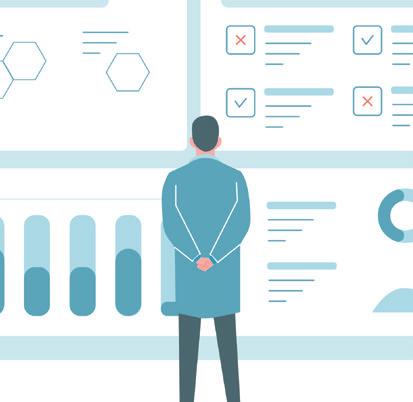
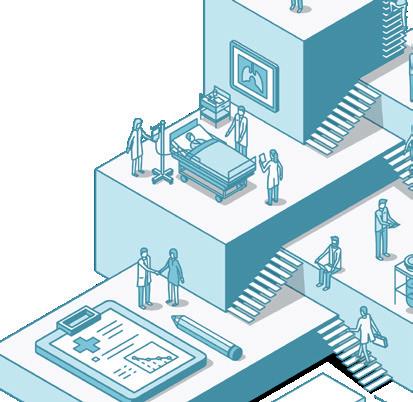
International approach
The UK has the desire to be a world leader in artificial intelligence. Taking a global approach to how we do regulation and align with other key jurisdictions is an important element of this. We are already seeing this being put into practice with joint work between MHRA, FDA and Health Canada, as well as proposals to use IMDRF classification from SAMD within the new UKCA mark.
References 1. AI Roadmap Methodology and findings report (hee.nhs.uk)
Page 04
Page 06
02 MEDIAPLANET A PROMOTIONAL SUPPLEMENT DISTRIBUTED ON BEHALF OF MEDIAPLANET, WHICH TAKES SOLE RESPONSIBILITY FOR ITS CONTENTS READ MORE AT BUSINESSANDINDUSTRY.CO.UK
“Could a piece of software be better for your health than a pill?”
Dr Tim Ringrose President, Digital Health, Royal Society of Medicine
“Trusting data to give the health sector a boost with digital solutions.”
Lord Holmes of Richmond, Co-chair, All-Party Parliamentary Group on Data Analytics Jasmin Adebisi, Policy Manager for Health, Policy Connect
@BusinessandindustryUK Contact information: uk.info@mediaplanet.com or +44 (0) 203 642 0737 @MediaplanetUK Please recycle Project Manager: Georgie Bray georgie.bray@mediaplanet.com Project Manager: Jessica Steward Business Development Manager: Ciara Barker Managing Director: Alex Williams Head of Business Development: Ellie McGregor | Head of Print & Design: Thomas Kent Designer: Aimee Rayment Content Editor: Angelica Hackett O’Toole | Head of Digital Operations: Harvey O’Donnell Paid Media Strategist: Jonni Asfaha Social & Web Editor: Henry Phillips Digital Assistant: Carolina Galbraith Duarte | All images supplied by Gettyimages, unless otherwise specified IN THIS ISSUE
WRITTEN BY Andrew Davies Digital Health Lead, Association of British HealthTech Industries (ABHI)
Getting the right data to the right people at the best times
Leading experts warn that the NHS must upgrade levels of communication between digital systems to improve efficiencies and patient care.
Digital transformation within the NHS can deliver significant benefits to services through improved communication with better availability of real-time data. While most parts of the health service have developed digital strategies, a major issue lies in the variety of systems in use, which can mean parts of the NHS are not able to communicate effectively with each other or with other parts of the health and care system.
Digital capability
Digital healthcare expert Iain O’Neil explains that the current programme of work to implement electronic patient record (EPR) systems will be used to address some long-standing interoperability challenges. “The NHS has always had issues with getting its technology to talk to each other,” he says.
O’Neil believes the current £2.1 billion investment into EPR to digitise hospitals, or upgrade existing EPR, is an opportunity to better align systems for improved communication between various NHS systems. “This huge programme is a chance to move the market and get suppliers to open their systems to safe data sharing,” explains O’Neil.
Accessible data
O’Neil wants to see APIs (application programming interfaces) created or improved so that systems can interface with primary or social care and other elements of
the NHS so that patient data is available to the right person when they need it. “The focus needs to be on the user. Patients, clinicians and staff are on a continuum, but it is no good if patients have data and clinicians cannot see it,” he continues. “We need that data to be available and accessible to people who need it — patients, staff and clinicians.”
O’Neil is Managing Partner for Healthcare at TPXimpact, an all-service digital agency formed in 2021. “We strongly believe in having an impact with outcomes for real people,” he says.



Saving lives
They also work with bodies such as NHS Blood and Transplant with donor-facing services and the Welsh Ambulance Service Trust (WAST). O’Neil says: “We built an amazing dashboard for WAST showing where all its blue lights are at any one time, whether patients are onboard or if vehicles are heading to or from a hospital or parked outside. That level of new, real-time data enabled the service to make better decisions. WAST told us lives have been saved with the ability to steer its fleet using real-time data.”
Digital transformation can help healthcare run more effectively by automating processes and helping reduce backlogs to improve patient services. It also has exciting potential to allow staff more time to care for patients and empower patients to take control of their healthcare.
Wireless technology is helping the NHS achieve its core purpose: providing comprehensive healthcare that is available to all.
One example of accessible wireless technology is a high-tech, mobile health clinic — ‘Find and Treat’ —which is used to improve access to screening, testing and treatment for tens of thousands of vulnerable, homeless and high-risk people every year.
High-tech mobility and connectivity
Find and Treat operates out of University College London Hospitals and is part of NHS Digital’s Future Wireless Project Trials. It aims to tackle a wide range of infectious and chronic diseases by screening, diagnosing and treating conditions such as tuberculosis (TB), Covid-19, Hepatitis B and C, HIV, cardiovascular issues, STIs and flu.
The service has been fitted with a range of high-tech tools and software to enable real-time remote diagnosis and referrals onboard the mobile health unit.
Technology includes a digital portable X-ray camera, artificial intelligence software, a teleradiology network to allow remote reading of X-rays using the unit’s flat-pack satellites, 4G and 5G routers, roaming SIM cards and smart antenna systems. This technology has transformed the unit’s connectivity while on the streets, allowing it to reach and help more people.
Healthcare in hard-to-reach communities
The service targets groups at high risk of TB and other blood-borne viruses, like HIV and Hepatitis, but don’t get access to the healthcare they need. The main focus is on people experiencing homelessness. Find and Treat’s team of peer workers, who have lived experience of homelessness, help build trust and understanding with a patient group suffering from diseases of poverty and inequality. During the pandemic, the team also provided Covid-19 testing and vaccinations to people experiencing homelessness. The multiple wireless connectivity options onboard the high-tech van enable sophisticated digital solutions to be used. They help vulnerable patients get diagnoses quickly and easily — without needing to visit a hospital. The service enables patients to access more timely treatment and, ultimately, is helping to reduce the spread of disease.
The first 5G-connected hospital
Another wireless trial, also funded by NHS Digital, has led to South London and Maudsley NHS Foundation Trust becoming the first 5G-connected hospital in the UK. Through the trial, clinicians have access to digital innovations such as the eObs app (eObservations), which enables the use of handheld devices to update patient records digitally and make live observations.
A PROMOTIONAL SUPPLEMENT DISTRIBUTED ON BEHALF OF MEDIAPLANET, WHICH TAKES SOLE RESPONSIBILITY FOR ITS CONTENTS READ MORE AT BUSINESSANDINDUSTRY.CO.UK 03 MEDIAPLANET
How wireless tech is transforming access to healthcare to reach those most vulnerable
Read more at tpximpact.com Paid for by TPXimpact
The service enables patients to access more timely treatment and, ultimately, is helping to reduce the spread of disease.
INTERVIEW WITH Iain O’Neil Managing Partner Healthcare, TPXimpact
WRITTEN
Patrick Clark Director of Infrastructure Services, NHS Digital and the Future Wireless Project Lead
WRITTEN BY Mark Nicholls
BY
Could a piece of software be better for your health than a pill?
Alongside the rise of telehealth and remote services during the Covid-19 pandemic, digital therapeutics are being developed and adopted by healthcare services at an increasing rate.
Doctors are prescribing software applications to help patients prevent, manage or treat medical conditions. They have great potential to improve patient outcomes, particularly for people with long-term conditions including diabetes, depression and Parkinson’s disease.
Evidence-based intervention
‘Digital therapeutics’ (often referred to as DTx) can be used effectively alongside traditional pharmaceutical drugs and, in some cases, instead of drugs. The Digital Therapeutics Alliance (DTA) describes digital therapeutics as “delivering evidence-based therapeutic interventions driven by highquality software programmes to prevent, manage or treat a medical disorder or disease.” They often use data analytics, artificial intelligence and cognitive behavioural psychology to help people manage their health and treatment.
Treating conditions
Digital therapeutics are becoming available for a wide variety of conditions. One such example, Sleepio, delivers cognitive behavioural therapy (CBT) over six weeks via computer or smartphone for people with insomnia.
The National Institute for Health and Care Excellence (NICE) now recommends Sleepio as a cost-saving option for treating insomnia for people who would otherwise be offered sleeping pills. The service has been made available to all 4.5
Designing digital care innovations with patients to find real solutions
Engaging with patients early in the healthcare tech innovation process can help ensure digital services work for those who use them.
Healthcare technology innovations have the potential to transform how patients receive care. That could be through greater efficiencies in diagnosing, treating and caring for patients or improving their access to care.
Discovering real needs
To be successful, patients’ needs must be at the forefront of the design process. People who use a service have the greatest insight into whether the design is appropriate and improves their diagnosis, treatment, care and overall quality of life. When patients are at the heart of technology innovation, there is a higher likelihood it will deliver services people need and will use.
million adults living in Scotland thanks to funding from the Scottish Government. Macmillan has funded the service for all patients in the UK recently diagnosed with cancer.
Digital therapeutics challenges

Digital therapeutics are one of the latest developments in the field of digital technology for healthcare and are regulated as ‘software as medical devices’ (SAMD) by the Medicines and Healthcare products Regulatory Agency (MHRA) in the UK and equivalent agencies in other countries such as the FDA in the US.

To achieve regulatory approval, the manufacturer (or developer) must demonstrate product safety, efficacy, quality, usability, privacy and lasting clinical impact. Since 2017, the FDA has approved over 40 digital therapeutics. In the UK, registered digital therapeutics are listed on a database published by the MHRA.
There are still many issues to consider such as whether or not DTxs should be regulated in the same way as drugs or only available on prescription from a healthcare professional. And how should we guard against the misuse of personal data that these services collect and track?
The potential for digital therapeutics is huge: not just to reduce the human and financial costs of long-term conditions but also to ease the load on the NHS and our over-burdened frontline clinical teams in general practice, emergency care and hospital medicine.
Codesigning with users
Increasingly, codesign is becoming fundamental to the innovation process. For example, researchers at King’s College London have worked with more than 300 patients and families, clinicians and others to codesign medical devices for people with rare skin conditions. People previously relied on their own ingenuity to improvise solutions to manage their wounds. Now, they can codesign garments that give them greater mobility and save them time to get ready.
Examples across the health and care system exist — where innovations make a real difference and offer best practice recommendations to minimise digital exclusion.
Providing a forum for input
The 100% Digital Leeds programme, led by a team in Leeds City Council, relies on its digital inclusion networks to provide a forum for different communities. Communities can then ensure their work draws on insights from these key groups of people, such as older people, to strengthen digital inclusion. The approach means people in care homes across the city can receive care and were able to keep in touch with their loved ones safely during the Covid-19 pandemic.
Making partnership standard practice Working in partnership with patients and carers must become the standard practice in digital health technology if we want to see wider health benefits. Resources on how to do this effectively are available, such as the evidence-based guide ‘How to involve and engage patients in digital health tech innovation,’ developed by the University of Plymouth, in partnership with the Boehringer Ingelheim — the sponsor of the Patient Coalition for AI, Data and Digital Tech in Health — and Academic Health Science Networks. Designing healthcare technologies with those who will use them can improve the experiences and outcomes of patients and those who care for them.
04 MEDIAPLANET A PROMOTIONAL SUPPLEMENT DISTRIBUTED ON BEHALF OF MEDIAPLANET, WHICH TAKES SOLE RESPONSIBILITY FOR ITS CONTENTS READ MORE AT BUSINESSANDINDUSTRY.CO.UK
WRITTEN BY Rachel Power Chief Executive, Patients Association and Chair of the Patient Coalition for AI, Data and Digital Tech in Health.
WRITTEN BY
Dr Tim Ringrose President, Digital Health, Royal Society of Medicine
Learn more about this exciting field from a panel of experts, please join the Royal Society of Medicine on the 18th January 2023. All are welcome, scan the QR code to find out more.
Supporting the NHS: co-creation and partnerships are key to healthcare solutions
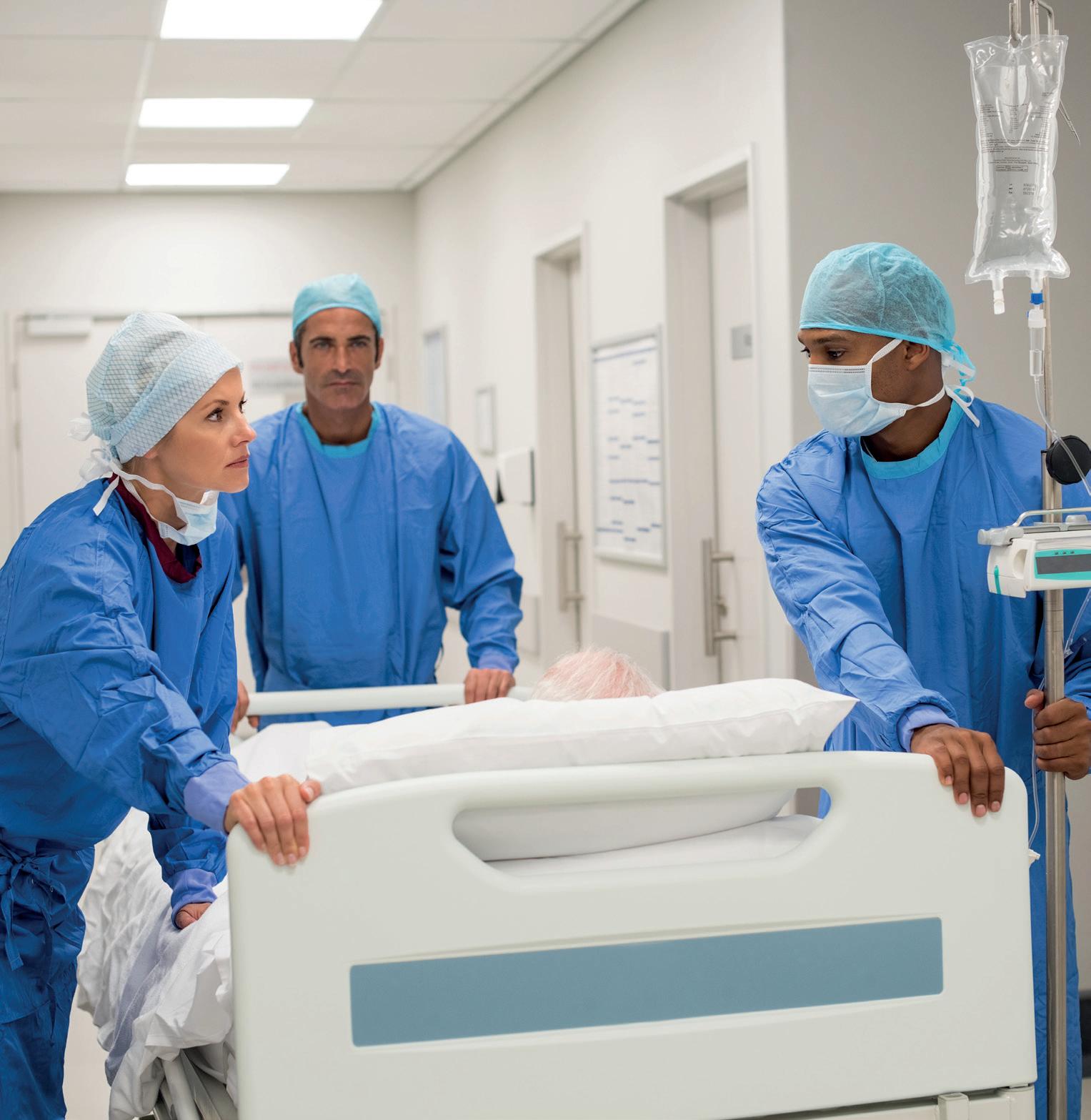
They drive this with their knowledge, expertise and technology to help with the ongoing NHS pressures through various programmes and initiatives.
The newly established Vanguard Innovation Programme identifies the NHS’s challenges first, then explores how HCPs and digital partners can co-create innovative solutions together. Professor Sultan Mahmud, the company’s Director of Healthcare, explains that one part of this is the virtual ward initiative where patients are remotely monitored at home, away from hospital or GP settings so that patients who require full hospital care can get it quickly. With the right training and adoption, this can support some of the busiest departments.
The Health Innovation Hub at Adastral Park, Suffolk is a world-class R&D collaboration space for organisations across the health and social care ecosystem to co-create solutions with technology partners and academia. They test and assess those potential solutions with the frontline to ensure that they meet the healthcare challenges of tomorrow.
Safer decisions
Equally important is the visualisation of data and ensuring that clinicians get the best medical insight to make more informed, safer decisions.
Digital transformation within the NHS can help make care delivery more efficient and free up clinician time to focus on core care.
The NHS does an incredible job protecting us but is facing its biggest challenges of a generation, with staff shortages, the ongoing impact of the Covid-19 pandemic and now — increased winter demands. Patients continue to deal with long waiting lists to receive necessary treatments and procedures. Technology alone cannot solve all these problems, but it can help to address them. As a long-term partner of the NHS, BT is investing in digital breakthroughs to help support healthcare professionals (HCPs) and patients.
Clinicians addressing pressures
Dr Mateen Jiwani, an active NHS clinician, experienced Medical Director and BT Clinical Board member, stresses that new technologies must have relevance on the frontline. Services are struggling every day.
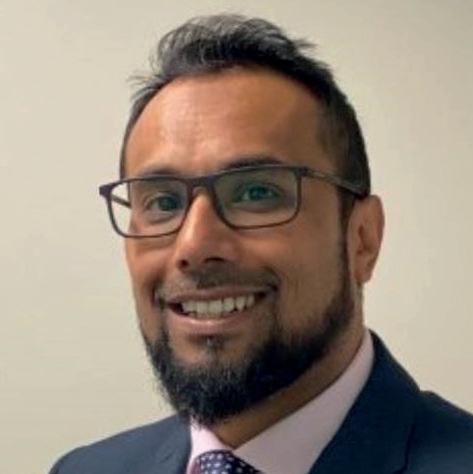
He says: “Winter pressures have always been present but are now amplified post-Covid-19 with
respiratory illnesses amongst the backlog; more patients needing monitored care in communities or hospitals; and the continued delay of routine care.” Digitally enabled healthcare can benefit clinicians but is only effective if it demonstrates an understanding of the challenges they face.
BT is addressing this issue by co-creating digital healthcare solutions with the NHS and its Clinical Advisory Board. “It has the right mix of experienced people in place who understand what is going on in the frontline,” says Jiwani. It brings together people with an understanding of healthcare systems who can identify whether digital healthcare solutions will work in NHS clinical settings.

Collaboration at the forefront
The company values true collaboration and innovation by deeply understanding customers and the people they work with. Their partnerships aim to support the healthcare ecosystem with a clinically led, digitally enabled approach.
Professor Mahmud, who has 25 years of NHS experience in executive roles in primary, secondary and community care, underlines the need for collaboration and co-creation with digital solutions.
“Digital is not a panacea, but it’s a big enabler,” he says. It’s not there to replace HCPs but to support them and ensure patients’ needs are met. “The most important thing around digital innovation is that it lands neatly in the clinician’s workflow, makes the right things easier to do and releases time for care. That’s why we have a clinical board to assess what works in real life.”
With NHS personnel shortages, he believes digital innovations provide support for clinicians and patients and improve staff retention.
Mahmud adds: “You can have wonderful tools, but if they are not connected by the best possible infrastructure and aggregators, you are not going to get very far.”
Clinically led, digitally enabled The NHS deserves to join forces and do more with partners who are willing to listen. They can take the lead and show digital innovators how to best serve the population. Ultimately, without true collaboration, digital transformation in the NHS will struggle to reach its full potential.

A PROMOTIONAL SUPPLEMENT DISTRIBUTED ON BEHALF OF MEDIAPLANET, WHICH TAKES SOLE RESPONSIBILITY FOR ITS CONTENTS READ MORE AT BUSINESSANDINDUSTRY.CO.UK 05 MEDIAPLANET WRITTEN BY Mark Nicholls
Scan the QR code to find out more Paid for by BT
INTERVIEW WITH Professor Sultan Mahmud Director of Healthcare, BT
INTERVIEW WITH
Dr Mateen Jiwani, GP Executive Medical Director and Principal Clinical Consultant, BT
WRITTEN BY Ian Townend, Chief Architect, Transformation Directorate, NHS England

How standards support the sharing of information in the NHS
Sharing information is vital to the functioning of the health and care service. This can include information for patient treatment, medications or at a population level to support risk stratification of patients and the management of care settings.
We need to have access to structured information that can be disassembled and used in different ways to support these activities. This could include creating a summary of someone’s care using a standard like the International Patient Summary, consuming a diabetic’s blood sugar readings to create a visual of their levels over time or ensuring that when a patient is admitted to a hospital, those providing care can maintain their medications.
Filling in gaps
To share information effectively, we need not just standards and specifications but consistent implementations. For some time, we have had this for administrative data like a patient’s demographics, but not across clinical data. There are several offerings in the market that provide some of this — but often to their own standard and not a shared one which everyone can use.
Clinical codes
A standard sets out the rules for a particular area such as SNOMED CT for conveying clinical codes (the semantic meaning), HL7 FHIR for messaging (the syntactic structure), NHS number for identifying the patient and a host of infrastructure standards to get the information from one point to another.
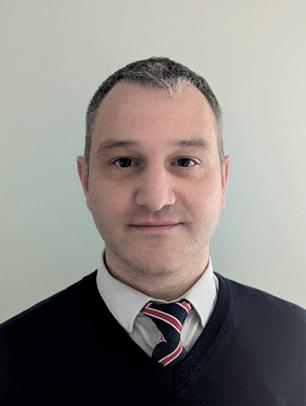
These need to be combined into a specification to set out how we will convey this information. For example,
a FHIR patient resource to carry the NHS number and demographic details along with a condition resource with a SNOMED code such as 44054006 (the code for diabetes). Using this specification, a provider of data can be clear about how it should be exported from a system, and a consumer of this data can be sure about what they will receive from any number of providers.
Trusting data to give the health sector a boost with digital solutions
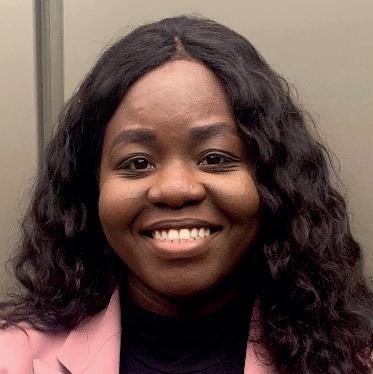
Digital solutions can tackle some of the health and social care sector’s greatest challenges. They can support a more efficient service that maximises the benefits for users such as patients and doctors.
Combining different services through data sharing will increase the speed and efficacy of diagnosis and treatment. Implementing digital technologies means that people can access their healthcare at any time.
Streamlined communication
To share information effectively, we need not just standards and specifications but consistent implementations.
This is harder than it may sound, but progress is being made with programmes like GPConnect (access to consistently structured data from general practice) and structured discharge summaries. Key to the success of this effort is working with key partners, including the Professional Record Standards Body supporting content standards and discovery and INTEROPen supporting technical specifications and hackathons.
Some great training resources are available across standards with further resources coming in the new year. The forthcoming Standards and Interoperability strategy from NHS England will set out the direction of travel for this area.
Different services would lead to easier access to patient data, speeding up referral times and transitions between services. Communication between health professionals, patients and carers would be better. For example, having a single app would speed up a patient’s contact with their GP, physiotherapist and pharmacist. Digital solutions would also allow remote monitoring of patients and a reduction in hospital bed days. These capabilities will benefit both the individual and the sector.
We, therefore, welcome the Government working on innovative digital solutions for health and social care — a central pillar in its ambition for health services. This could provide a springboard to integrate all aspects of health and social care — a key tenet of the Health and Care Act and reflected in the ‘Data Saves Lives’ Strategy published on 13 June 2022.
Building trust is essential if the currently disjointed systems for data collection and sharing across the health service are to be modernised through technology.

Trust with data
Making use of patient data is critically dependent on public trust. The Government needs to recognise and address the fact that public perception of the storage and use of health data has reached an all-time low. Last year, attempts to encourage shared patient records resulted in widespread pushback from Parliamentarians, clinicians and the public due to concerns about data access and security.
Building trust is essential if the currently disjointed systems for data collection and sharing across the health service are to be modernised through technology. We need to get rid of the sector’s 20th-century infrastructure and use technology that people are familiar with. This means dealing with public concerns surrounding the use of patient data. The Government should ask itself why — even now — nearly 5 million people actively use the independent Zoe health app launched to help with Covid-19 tracking to record how they are feeling. Perhaps, they can learn from this.
Ongoing research
Policy Connect, together with the All-Party Health Group (APHG) and All-Party Parliamentary Group for Data Analytics (APGDA) will continue to come forward with ideas on effective data management and its potential for innovation, research, patient care and staff efficiency as part of its upcoming programme.
06 MEDIAPLANET A PROMOTIONAL SUPPLEMENT DISTRIBUTED ON BEHALF OF MEDIAPLANET, WHICH TAKES SOLE RESPONSIBILITY FOR ITS CONTENTS READ MORE AT BUSINESSANDINDUSTRY.CO.UK
WRITTEN BY Lord Holmes of Richmond Co-chair of the All-Party Parliamentary Group on Data Analytics
WRITTEN BY Jasmin Adebisi Policy Manager for Health, Policy Connect
Together
Our family of healthcare and life science brands – including Maquet, Lancer, Atrium, Pulsion, Datascope, Steritec, Stericool, Trans and others –are unifying as Getinge.

As our company has grown over the years, Getinge has become a global market leader in healthcare and life science. By unifying all our brands into one, we can combine decades of scientific and technical knowledge, and commit even more to investing in new innovations, helping to pioneer therapies and build a more sustainable healthcare for the future.
www.getinge.uk
07 MEDIAPLANET READ MORE AT BUSINESSANDINDUSTRY.CO.UK
as one, we’re changing healthcare
Getinge Ltd., Units 14-15 Burford Way, Boldon Business Park, Sunderland, Tyne And Wear NE35 9PZ This document is intended to provide information to an international audience outside of the US.
08 MEDIAPLANET A PROMOTIONAL SUPPLEMENT DISTRIBUTED ON BEHALF OF MEDIAPLANET, WHICH TAKES SOLE RESPONSIBILITY FOR ITS CONTENTS READ MORE AT BUSINESSANDINDUSTRY.CO.UK
are prescribing software applications to help patients prevent, manage or treat medical conditions.
Tim Ringrose, President, Digital Health, Royal Society of Medicine
Doctors
~Dr




















